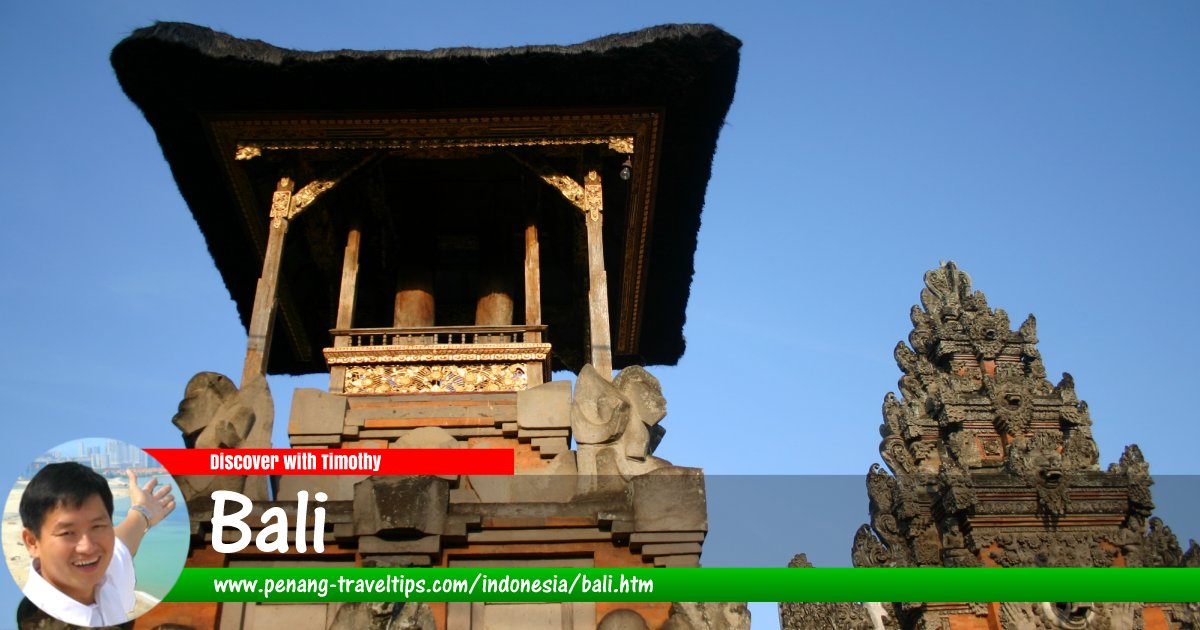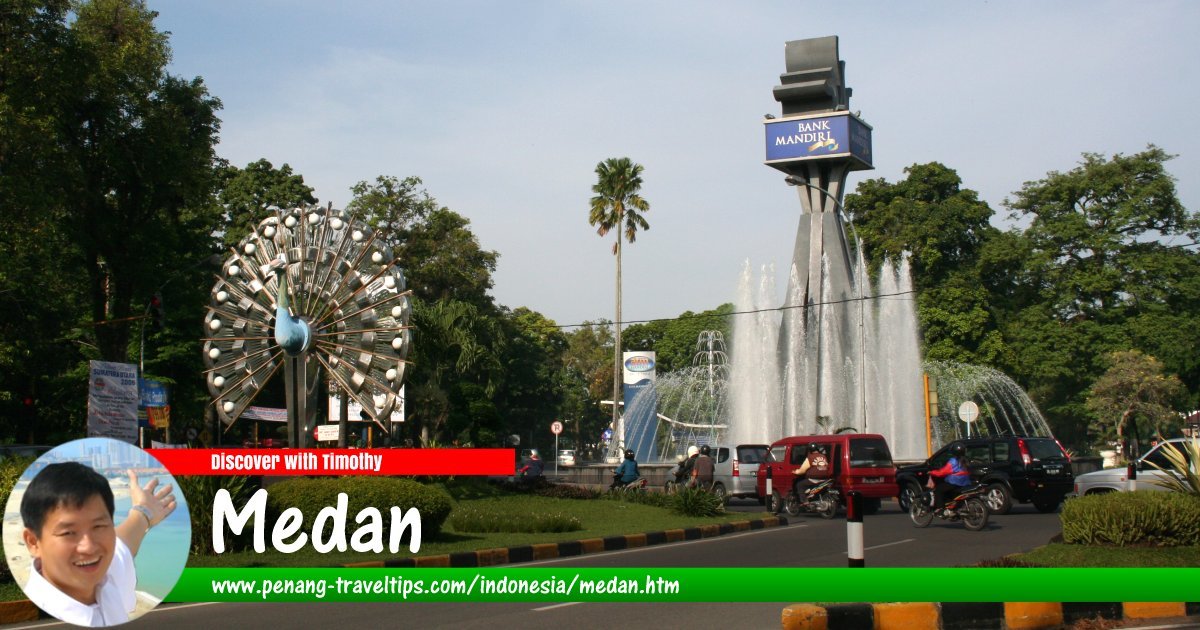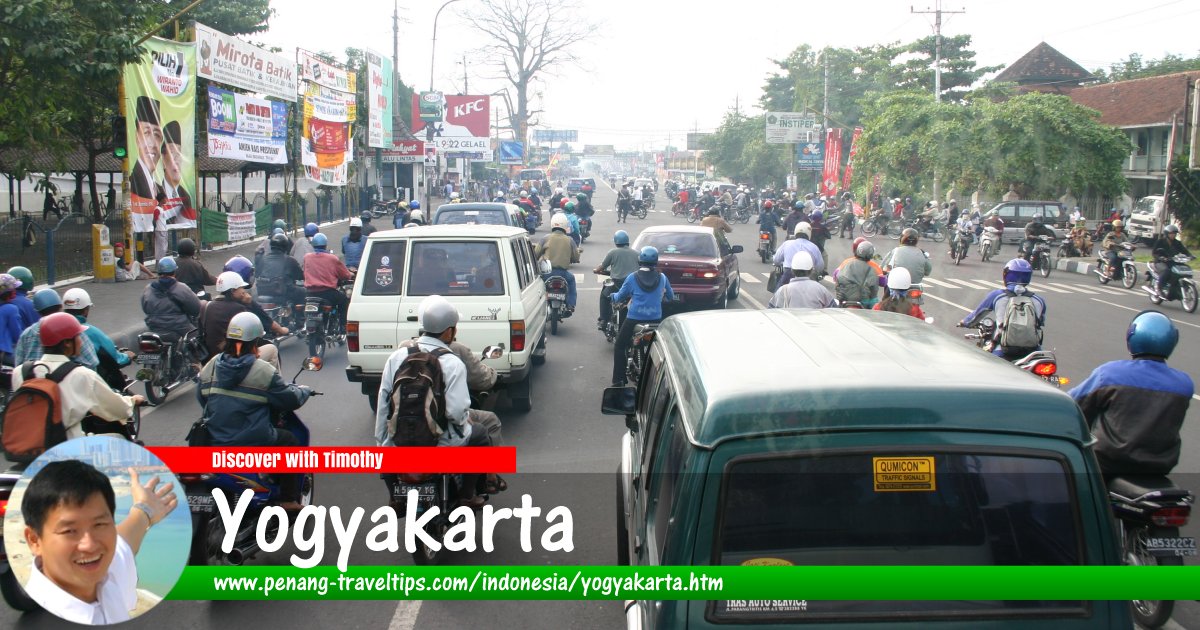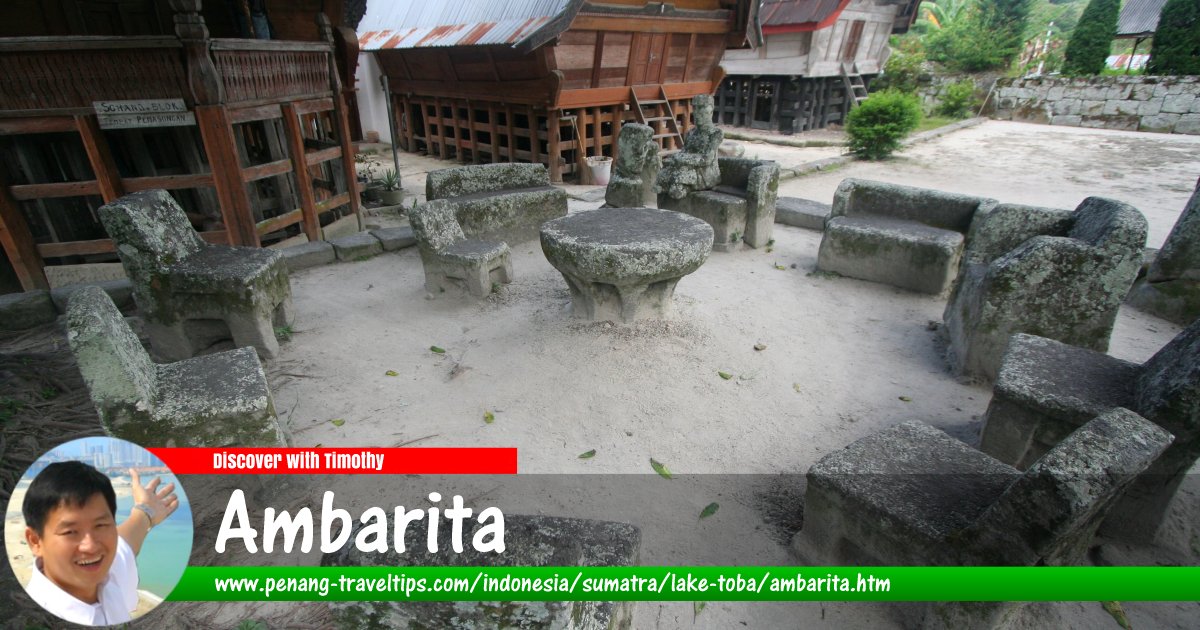 Stone chairs of Ambarita, Samosir Island (29 April 2006)
Stone chairs of Ambarita, Samosir Island (29 April 2006)
Ambarita Stone Chair Village (GPS: 2.67507, 98.831) is an ancient Batak tribal village on Samosir Island, in Lake Toba. It is often called the Ambarita Stone Chair Village due to its historic relics from the pre-Christian era. It is located an hour's walk northwest from Tuk Tuk or about 20 minutes by boat. I visited it together with a small group of AsiaExplorers members.
What makes Ambarita interesting, from an anthropological standpoint, is that during ancient times the Toba Batak people of Ambarita practised a form of carnibalism. What remains today is the cluster of stone chairs where the village elders held council. Whenever an enemy was captured, the elders would invite the rulers of neighbouring villages to a conference, to determine the fate of the victim. The victim is held in behind bars under one of the houses.
If it is determined that the victim deserved death, he is taken to a dining table where he is clobbered to death. There is a boulder where the victim is beheaded. After that, he is chopped up, his flesh is cooked with buffalo meat, and served to the tribal council, who completed the meal with a beverage of the victim's blood!
We arrived at Ambarita by boat. From the jetty, we were first shown the tomb of Laga Siallagan, the first raja of Ambarita. From there, we were led to the ancient Batak village where there is a row of traditional Toba Batak houses. As I examined the houses, which are still used today, I find that many of them have zinc roofing, somewhat removing the romanticism I would associate with visiting this place. I suppose zinc roofing would be more long lasting, although I would have preferred that the villagers retained the original roofing which I assume should be ijuk thatch made from coconut fibre.
From the row of traditional houses, we moved on to view the stone chairs and the cage where victims are incarcerated. I am surprise to see that there is also a stone figure sitting on one of the chairs, and we had our photos taken with "him".
A short distance from the stone chairs is the place where victims meet their death. Our guide demonstrated how the Bataks go about with the procedure. He also showed us the Batak calendar and other tribal implements. On the hill above are the graves of the tribal elders as well as a monument to Raja Laga Siallagan. From the appearance of the monuments and graves, it appears that the tribal elders have embraced Christianity, but I could not determine whether these Christian elders are the ones who were still practising carnibalism.
Beyond the stone "human kitchen" are souvenir stalls selling T-shirts and other trinkets. My observation about all the souvenir stalls in Samosir island is that all of them seem to carry the same items. And I can name them: t-shirts and wood carvings. I could hardly find anybody selling good guidebooks on Samosir or Lake Toba anywhere in sight! Thus, I had to depend on information drawn from my guide as well as my own research down outside Lake Toba to furnish the information on this page.
Ambarita is  on the Map of Samosir Island, Indonesia
on the Map of Samosir Island, Indonesia
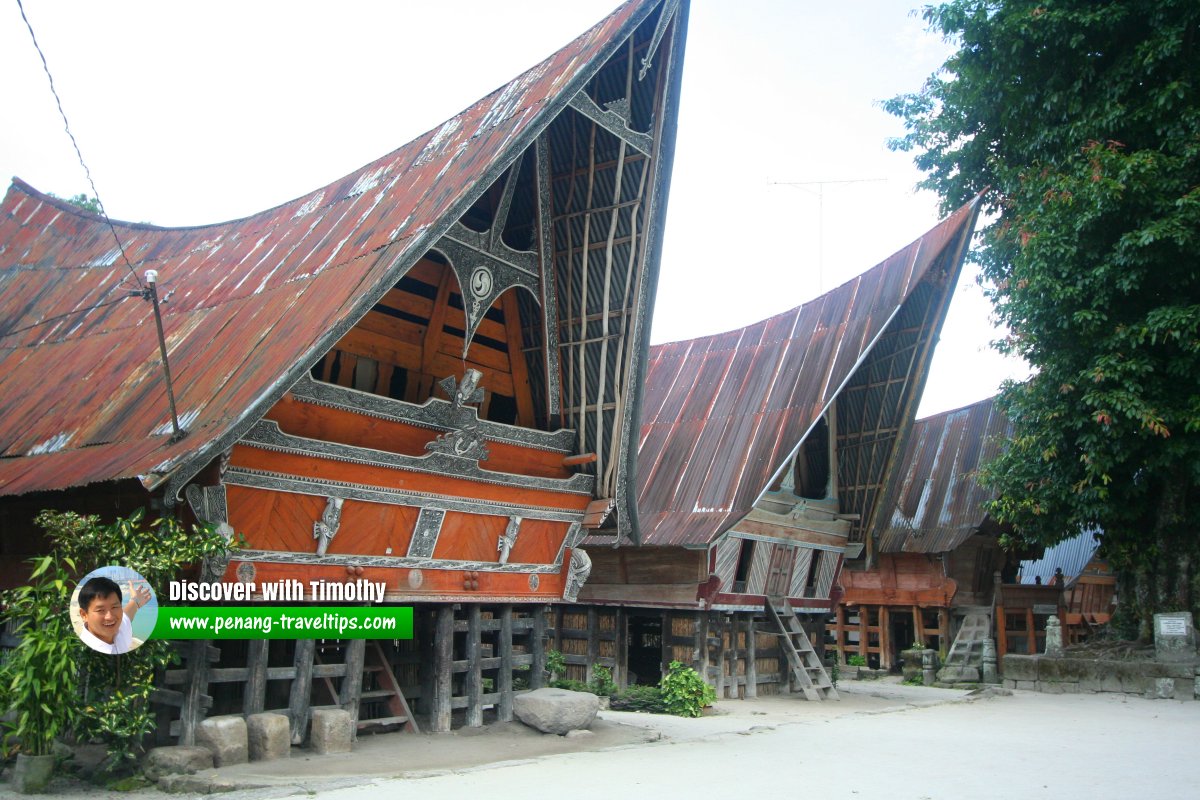 Restored Toba Batak houses in Ambarita. (29 April 2006)
Restored Toba Batak houses in Ambarita. (29 April 2006)
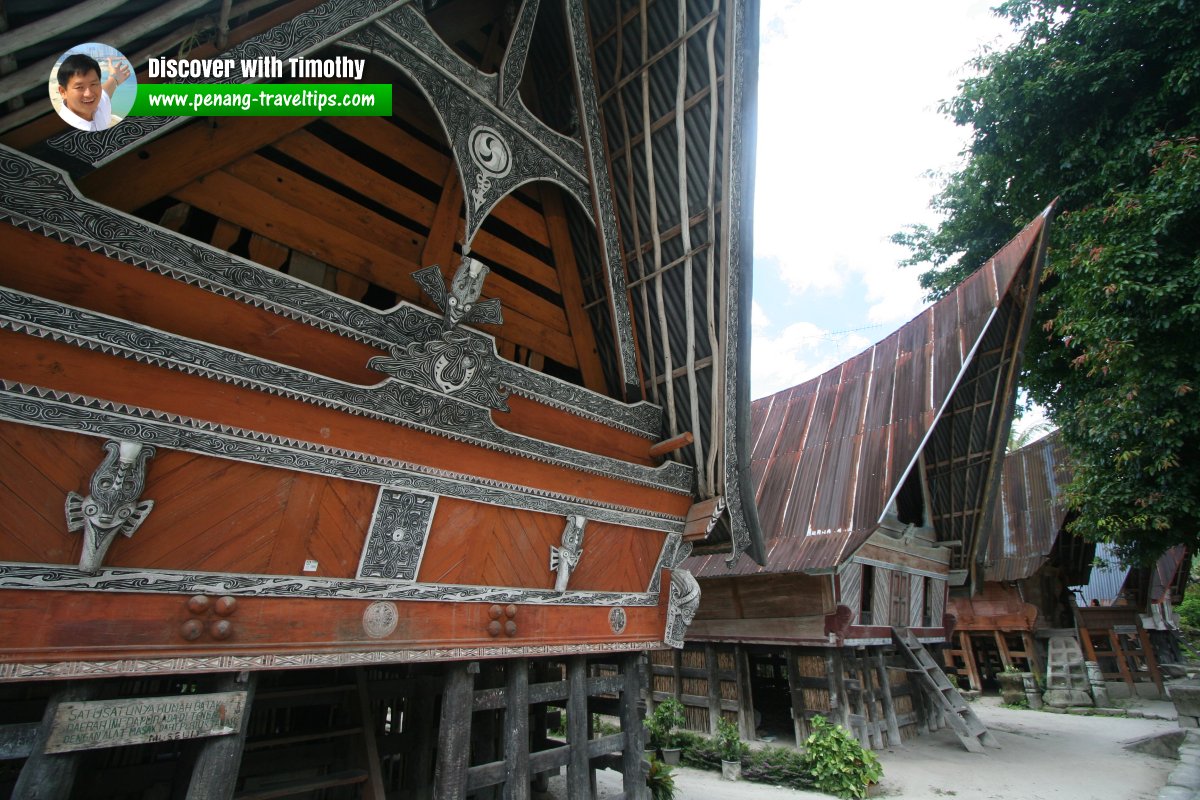 A closer view of the tribal houses at Ambarita reveals intricate carvings on the façade. (29 April 2006)
A closer view of the tribal houses at Ambarita reveals intricate carvings on the façade. (29 April 2006)
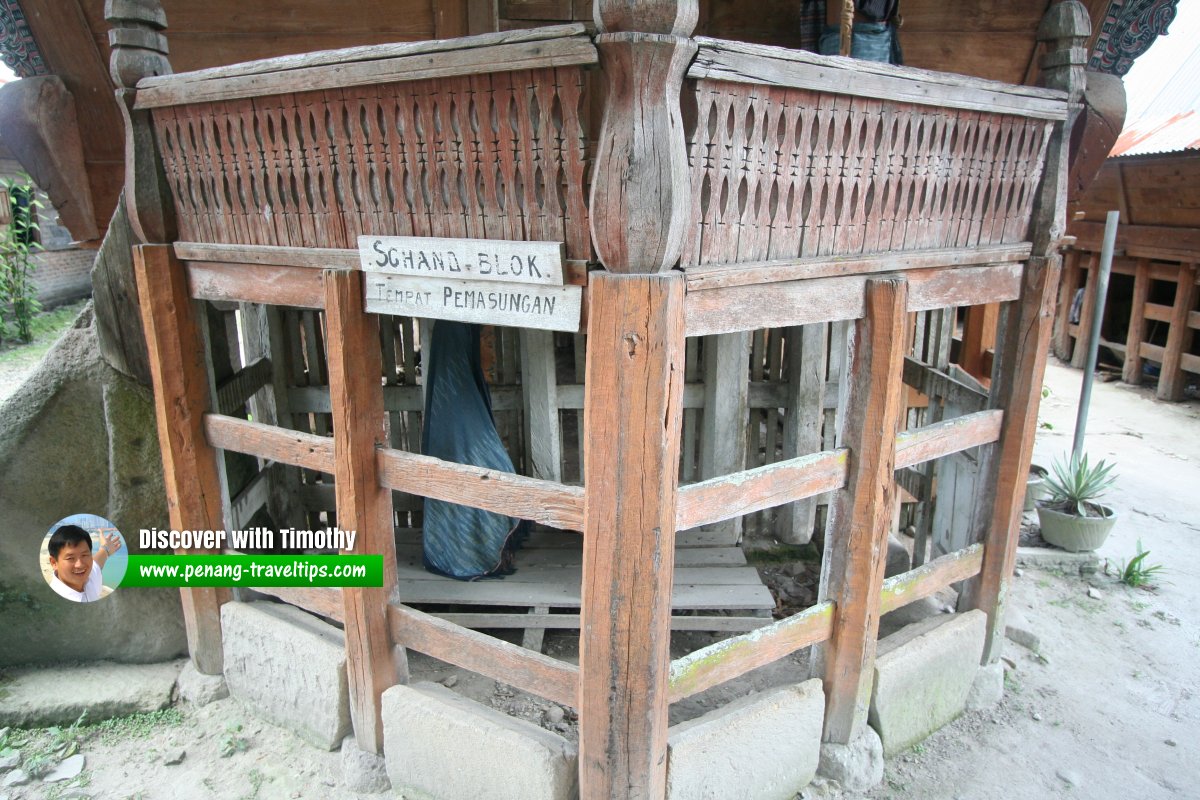 Victims awaiting their fate is imprisoned behind the wooden bars below this house. (29 April 2006)
Victims awaiting their fate is imprisoned behind the wooden bars below this house. (29 April 2006)
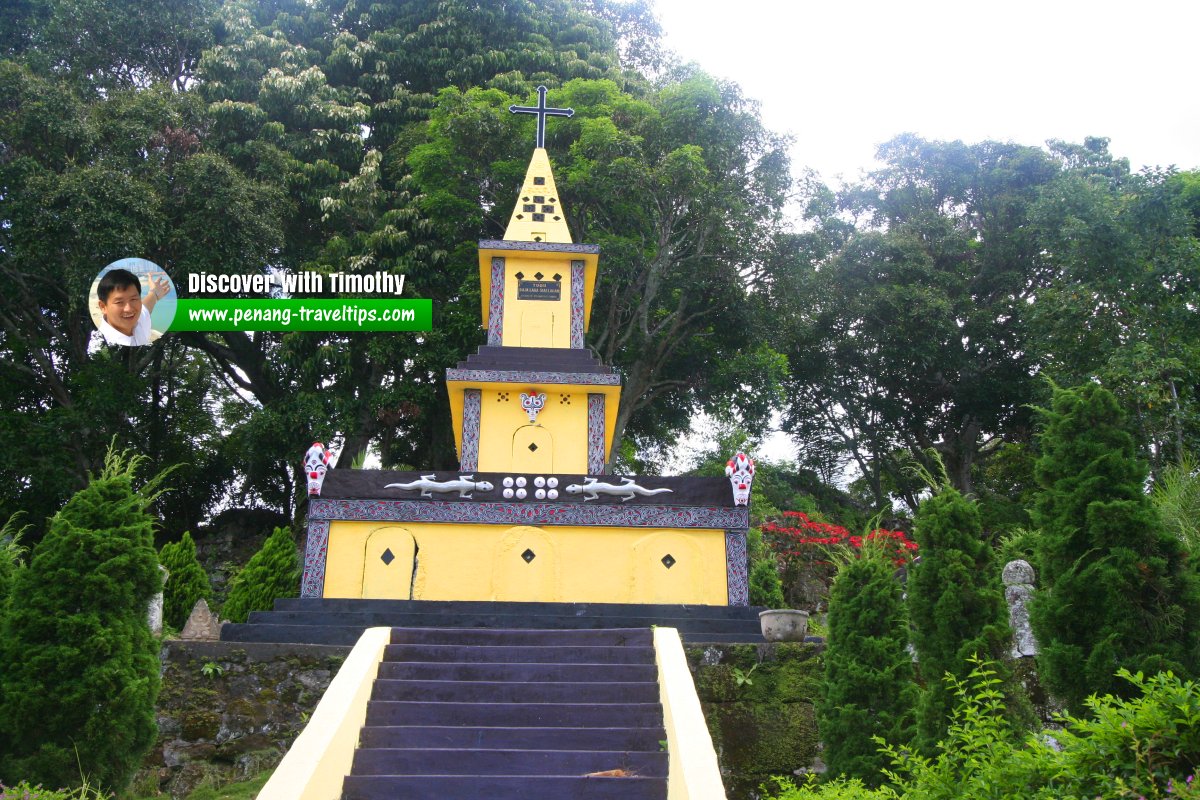 Monument to the Siallagan kings located near the entrance to the tribal village. (29 April 2006)
Monument to the Siallagan kings located near the entrance to the tribal village. (29 April 2006)
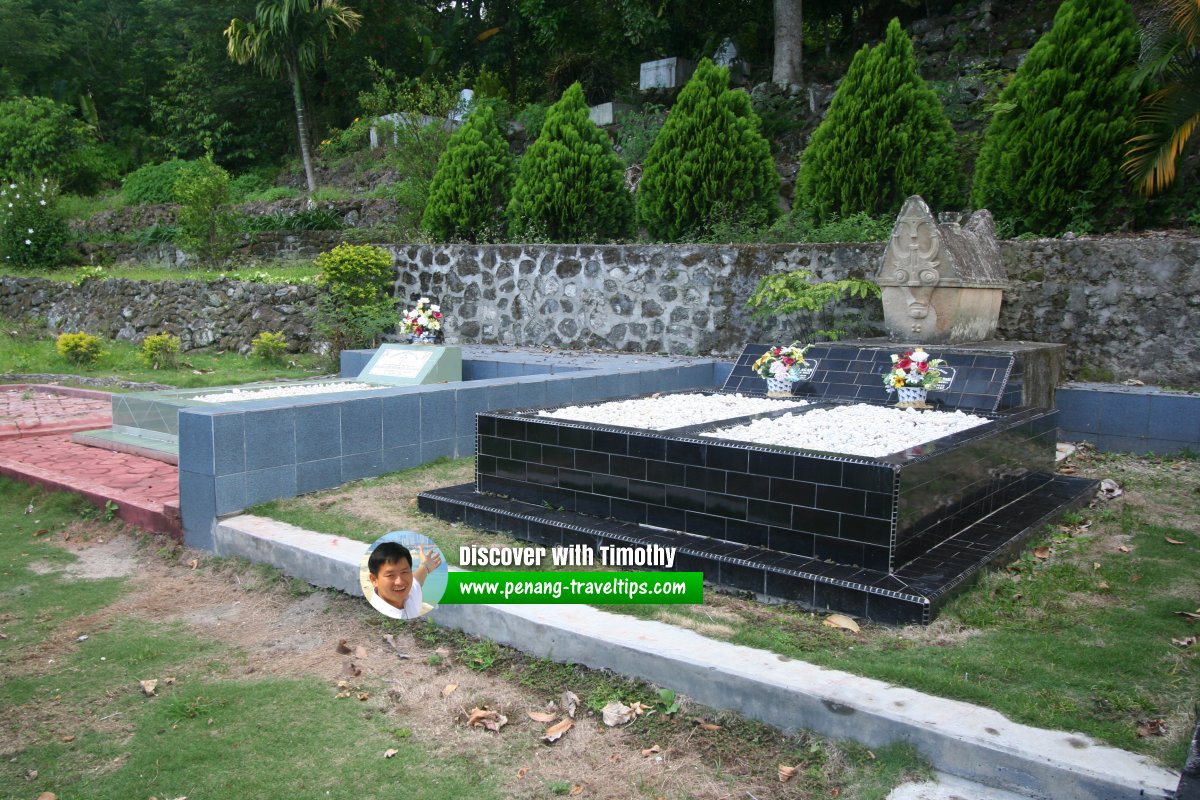 This is possibly the tomb to Laga Siallagan, the first ruler of Ambarita. (29 April 2006)
This is possibly the tomb to Laga Siallagan, the first ruler of Ambarita. (29 April 2006)
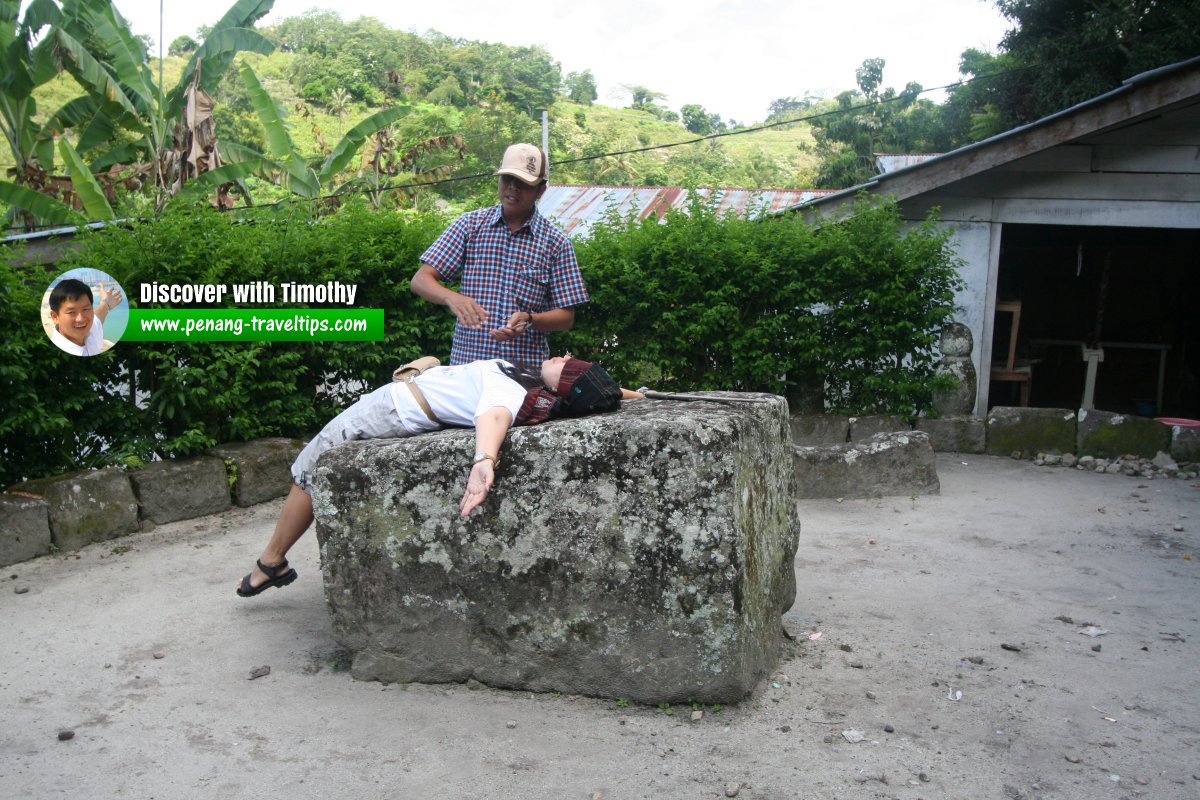 Our guide demonstrating how a victim is disemboweled. (29 April 2006)
Our guide demonstrating how a victim is disemboweled. (29 April 2006)
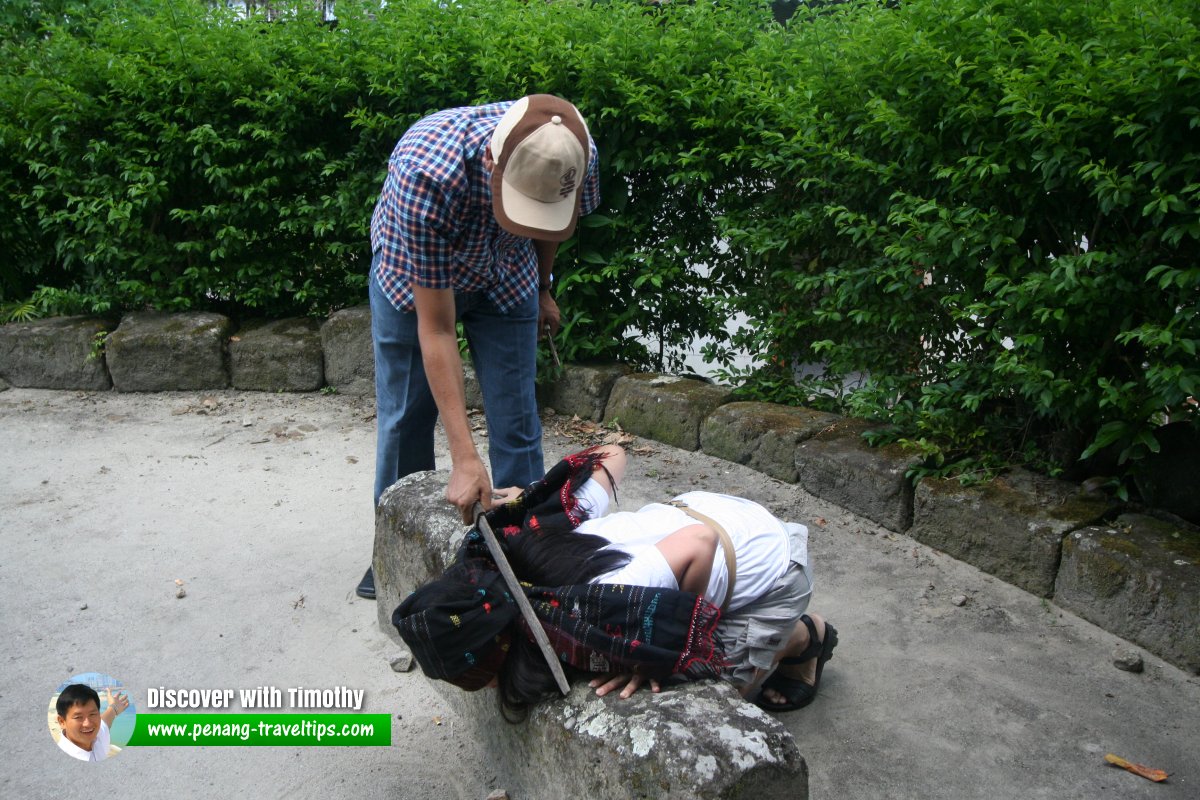 Our guide demonstrating how a victim is beheaded. (29 April 2006)
Our guide demonstrating how a victim is beheaded. (29 April 2006)
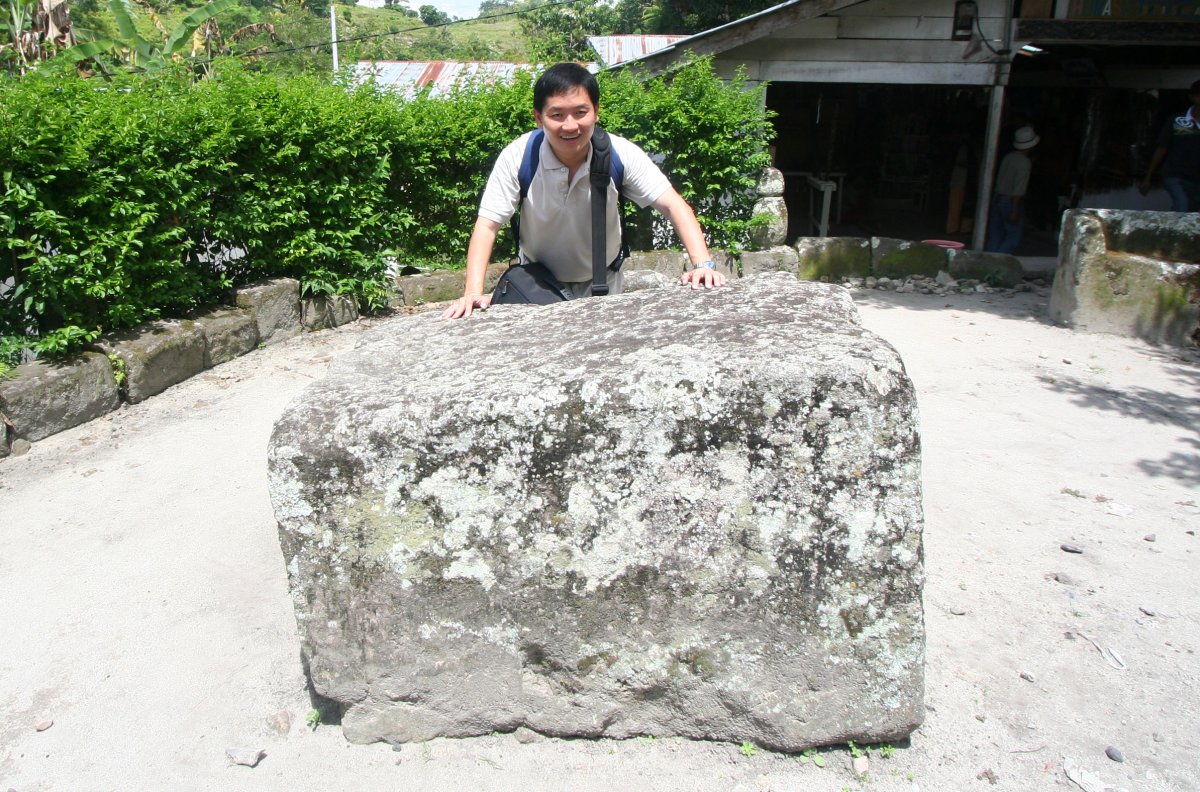 Here I am with the stone where victims were disemboweled. (29 April 2006)
Here I am with the stone where victims were disemboweled. (29 April 2006)
 Latest updates on Penang Travel Tips
Latest updates on Penang Travel Tips
 Destination Indonesia
Destination Indonesia

Copyright © 2003-2025 Timothy Tye. All Rights Reserved.

 Go Back
Go Back